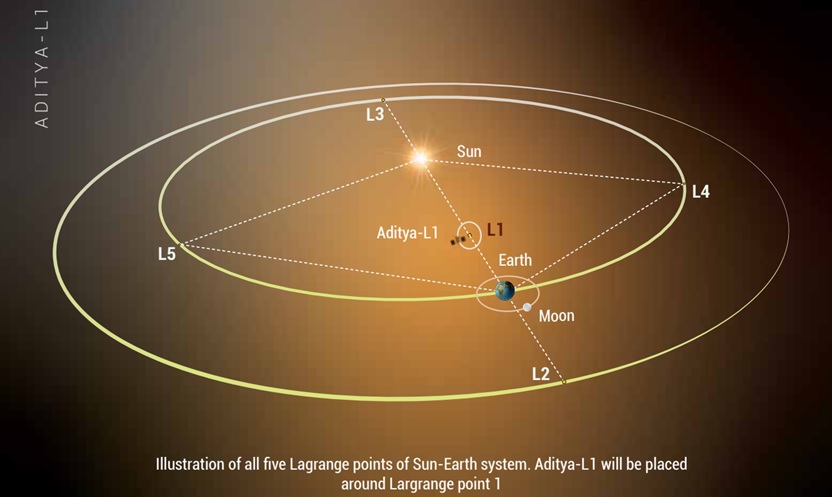The Indian Space Research Organisation (ISRO) successfully launched its Aditya L1 solar mission on September 2, 2023, at 11:50 AM IST from the Satish Dhawan Space Centre in Sriharikota by ISRO’s PSLV XL rocket. The spacecraft is carrying seven payloads that shall observe the photosphere, chromosphere, and the outermost layers of the Sun (the corona) using electromagnetic and particle detectors.
ISRO noted that the Aditya-L1 will neither land on the Sun nor approach the Sun any closer. The spacecraft will study the outer atmosphere of the Sun. The distance between Aditya-L1 and the Sun will be about 148.5 million kilometres (925,000 miles).
WATCH: Aditya-L1 Takes Selfie, Clicks Images Of Earth and the Moon
Aditya-L1 Mission:
— ISRO (@isro) September 7, 2023
👀Onlooker!
Aditya-L1,
destined for the Sun-Earth L1 point,
takes a selfie and
images of the Earth and the Moon.#AdityaL1 pic.twitter.com/54KxrfYSwy
Placed in the special vantage point of L1, four payloads will directly view the Sun and the remaining three payloads will carry out in-situ studies of particles and fields at the Lagrange point L1.
The suit of Aditya L1 payloads is expected to provide the most crucial information to understand the problems of coronal heating, Coronal Mass Ejection, pre-flare and flare activities, and their characteristics, dynamics of space weather, a study of the propagation of particles, fields in the interplanetary medium, etc.
What is Aditya L1?
Aditya L1 is the first space-based solar observation spacecraft that will be placed in a halo orbit around the Sun-Earth Lagrange Point 1 (L1). The satellite will cover 1.5 million kilometres from the Earth which is about 4 times farther than the Moon.
 Image: ISRO
Image: ISRO
L1 is a gravitationally stable point located about 1.5 million kilometers (930,000 miles) from Earth on the Sun-Earth line. This means that Aditya L1 will always be in the same relative position to the Sun and Earth, which will allow it to make continuous observations of the Sun.
Which layer of the Sun will Aditya L1 study?
What is Lagrange Point P1?
Lagrange points are areas in space where the gravitational forces of two large bodies, such as the Sun and Earth, balance each other out. For two-body gravitational systems, there are a total of five Lagrange points, denoted as L1, L2, L3, L4, and L5. The Lagrange point L1 lies between the Sun-Earth line.
 Image: ISRO
Image: ISRO
A satellite placed in the halo orbit around the L1 point has the major advantage of continuously viewing the Sun without any occultation/eclipse. This will provide a greater advantage of observing solar activities continuously.
What is Aditya L1? All You Need To Know About India’s First Solar Mission
When and How much time will Aditya L1 take to reach Sun?
Aditya L1 is expected to take about 4 months from the time of launch from Earth to reach the L1 point. Here is a phase-wise description of the trajectory of Aditya L1.
Trajectory of Aditya L1
 Image: ISRO
Image: ISRO
Launch from Earth: Initially, the spacecraft will be placed in a Low Earth Orbit. Subsequently, the orbit will be made more elliptical.
Launch towards L1 point: Later the spacecraft will be launched towards the Lagrange point (L1) by using onboard propulsion. As the spacecraft travels towards L1, it will exit the Earth’s gravitational Sphere of Influence (SOI).
Cruise phase: After the exit from SOI, the cruise phase will start.
Insertion into Halo orbit: Finally, the spacecraft will be injected into a large halo orbit around L1.
Comments
All Comments (0)
Join the conversation